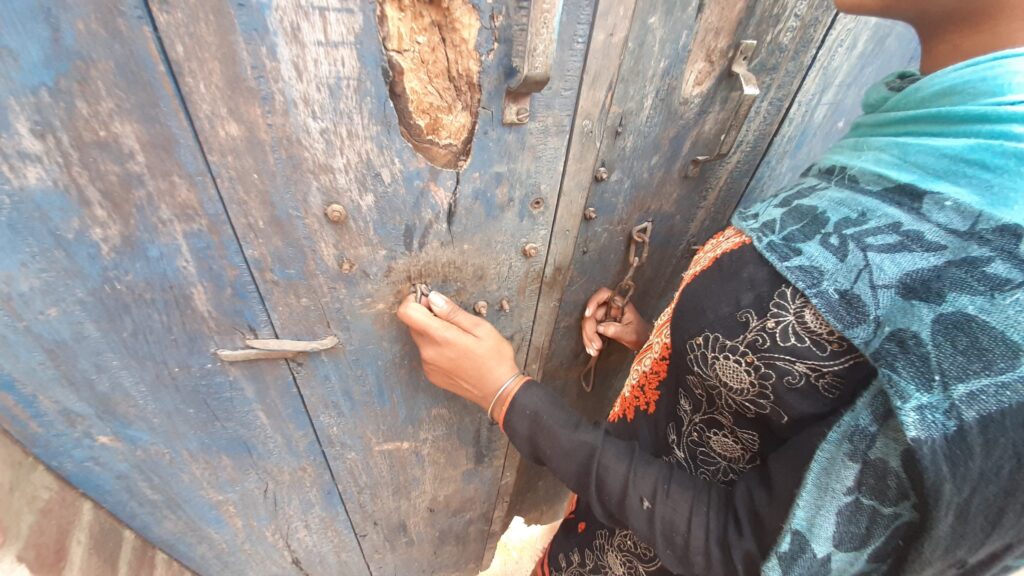The Hathras gang-rape victim is dead and gone, cremated in the dead of night with heavy police presence, and allegedly in the absence of her family members, who claim they were not able to meet their dead child one last time.
With this begins yet another short-lived political brouhaha around yet another gruesome rape in the country, which reminds one of the infamous Nirbhaya case that rocked the national capital and the country’s ‘conscience’ eight years ago, in December 2012.
Predictably, there is a flood of social media messages, including vitriolic ones, in support of or against the claims of the victim’s family — “But, her family only cremated her”; “She wasn’t raped”; “The case is politically motivated”, “Don’t bring in the caste angle” etcetera.
Meanwhile, the chief minister of Uttar Pradesh Yogi Adityanath has formed a special investigation team or SIT to probe the Hathras gang-rape incident, and it is expected to submit its report within seven days. The chief minister has also said trial of the case will be held in a fast-track court. Prime Minister Narendra Modi has called for strict action. Protests are erupting on the streets, with slogans against the police and local administration. In Hathras, stone pelting and lathi-charge have been reported too.
With time, will this Hathras case also become just another statistic in the long list of gruesome crimes against women in the country? Most of us seem to know the answer.
Meanwhile, here is some worrisome data around rape in India. As per the National Crime Records Bureau (NCRB), an agency under the Union home ministry responsible for collecting and analysing crime data, there were 33,977 cases of ‘reported’ rapes in the country in 2018. This comes to one ‘reported’ case of rape every 15 minutes. It does not take into account many rape cases that go unreported.
Further, crimes against women rose from 359,849 cases in 2017 to 378,277 cases in 2018. And, Uttar Pradesh, where Hathras is located, topped this list.

How much worse can it be for a girl or woman if she is also from the traditionally and historically marginalised and discriminated community of schedule castes, or Dalits? The Hathras gang-rape victim was a Dalit, and the four young men who allegedly raped her belong to an ‘upper’ caste.
Often, caste and women are used to settle scores in society, and there are umpteen examples of this in the recent past. Women belonging to the Dalit community are considered untouchables, but are often raped to show them their place, or settle old scores with the ‘lower’ caste family.
There are enough research papers and studies to show Dalit women are more burdened and discriminated on the basis of caste, class and gender.
A research study in five districts of Rajasthan on ‘Violence Against Dalit Women in Rajasthan’, conducted by Kundan Welfare Society and supported by National Commission for Women, noted: “The police often refuse to register FIRs in any case of violence or atrocity against the Dalits. Further, the registration of cases is delayed not only due to the indifference of police officials but also because the accused prevent the victims and their families from going to the police stations. And even if a case has been registered, the police fail to investigate it in a fair manner.”
The study goes on to say that, at times, the victim herself changes her statement due to social pressures. “In a few cases, the accused get arrested but are eventually released on bail by the court, even though the granting of bail to an accused in an atrocity case is against SC/ST Act. In such cases, the victims suffer a lot of mental, economic, social and financial trauma,” notes the study.
Another report, ‘Attacks on Dalit Women: A pattern of impunity’, by Human Rights Watch, has documented the use of sexual abuse and other forms of violence against Dalit women as tools by landlords and the police to inflict political “lessons” and crush dissent and labour movements within Dalit communities.
Other reports state that four Dalit women are raped every day in the country. Some studies indicate more than 23 per cent of Dalit women report being raped, many of them multiple times.

Two years ago, a coalition of Dalit women activists released a report titled ‘Voices Against Caste Impunity: Narratives of Dalit Women in India’ that compiles accounts of witnesses, statistics and testimonies about the effects of caste-based violence in India. The report, released at a side event of the United Nations Human Rights Council’s 38th session in Geneva, used the data of the National Family Health Survey to show how, by the age of 15, over 33 per cent scheduled caste women experience physical violence. The figure is 19.7 per cent for “other” category women.
According to statements from the Hathras gang-rape victim’s family, one of the rapists was known to harass the Dalit inhabitants in the area, and his grandfather had also been booked for thrashing the victim’s grandfather nearly two decades ago. Clearly, something not uncommon in a country where the upper castes have used rape as a weapon of choice to settle scores with ‘lower’ caste communities.
Gaon Connection has been trying to raise the issue of increasing crime, including rape, against girls and women in rural India by doing a series of stories, such as the seven-part ‘Raktranjit – Bloodstains’, and ‘After The Rape’.
It is important that the media continues to report on such incidents, without waiting for public outrage. Or, for raped Dalit girls to have their tongue chopped off and spinal cord broken, or killed and hung from a tree.


















